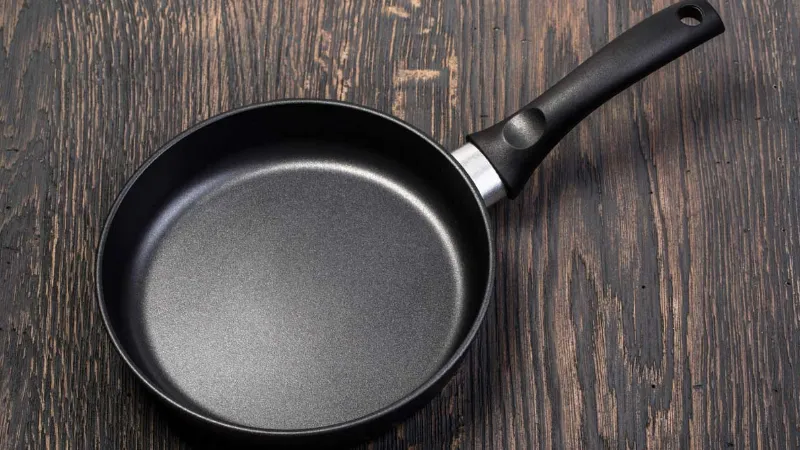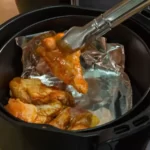What is a Blender? Types & Size & Usage & Brands
A blender is a kitchen appliance that mixes multiple ingredients together. It functions by mixing food ingredients into a liquified product after being chopped, ground, pureed, and/or combined.
Each blender has its own features and is made of a different material, and they range widely in price. The ideal blender will be determined by your blending requirements. If you frequently combine a lot of ingredients, like strawberries and tomatoes, to make thick smoothies for the entire family, you might want a bigger blender with more power. A smaller blender might be ideal if you primarily want to use it to make one serving of juice.
Table of Contents
The Types of Blenders
Today’s market offers eight different types of blenders. Below listed are the six types of blenders:
Hand blender: Your method of blending is referred to as a hand blender. Manually operated hand blenders are frequently used to combine the ingredients for baking.
Stick blender: A sturdy blender known as a stick blender comes with a tiny immersion stick that you insert right into your ingredients. For blending together less dense ingredients, such as oils or water, stick blenders work best.
Countertop blender: When preparing multiple servings, a countertop blender—which is typically 64 oz or larger—is most frequently used. For a lot of ice, a countertop blender works best.
Single-serve blender: A single-serve blender, also known as a smoothie blender, is a compact device used to combine a few food ingredients to create a single beverage. Your ingredients are added to a single cup rather than the blender’s bowl. You combine everything by setting the cup on the blending base.
Stand blender: Blenders that have a sizable bowl are known as stand blenders. Considering that it has a built-in whisk for bread or dough, this blender is most frequently used in baking.
Digital blender: An all-in-one food processor, blender, and juicer is a digital blender. You can usually control your cooking method with the many settings that are included.
Heavy-duty blender: Durable metal materials are used to construct commercial or heavy-duty blenders. Commercial blenders are made to handle more ingredients at once.
Cake blender: Using a larger blender, a cake blender can combine things like flour and eggs.
The Ideal Size of a Blender
Based on the ingredients you’re blending and the number of servings required, the best-sized blender will vary. A larger blender might be necessary if you’re blending more than 4-5 cups of ingredients. You might prefer a smaller, countertop blender if you’re blending fewer fruits and vegetables, such as 1-3 cups of food.
The capacity of blenders ranges from 3 to 14 cups, or 8 ounces to one gallon. Power should be taken into consideration in addition to size. Watts, typically with a range of 500 to 800 watts, are used to measure the power of blenders.
The Use Cases of a Blender
Blenders can be used for many different things. Below are 10 example use cases of a blender:
- Smoothies
- Milkshakes
- Spreads
- Salsas
- Dressing
- Frozen or iced coffees
- Purees
- Pancake batter
- Ice cream
- Soup
A blender can be used to cook or prepare a wide variety of foods. Using a blender to make smoothies may be the most popular application, but you can also use it to make dressing or even ice cream.
Can You Use a Blender as a Food Processor?
Undoubtedly, a blender can serve as a food processor. Both appliances function similarly by liquefying fruits and vegetables into a puree. One of the most common uses of a food processor is to mince meat, and some blenders can do the same. Specific settings on some blenders may enable you to obtain the same consistency as a food processor.
Can You Use a Blender to Make Juice?
You’re right; making juice in a blender is common. You can make a tasty, healthy drink by blending together fruits and vegetables in a blender. The fiber from fruits and vegetables will remain in the blender, unlike a juicer.
Can You Use a Blender for Fruit and Vegetables?
Using a blender, you can combine fruits and vegetables to create a smoothie. Smoothies that are thick and contain pulp can be made with a blender.
Does Blender Affect the Flavor of the Food?
No flavor is altered by blending. By liquifying the ingredients, it transforms solid foods into liquid beverages, which does affect the appearance and texture. No nutrients from fruits and vegetables are lost during the blending process.

The Best Blender Brands
The best blender brands include the following:
- Best overall blender: Vitamix E310 Explorian Blender
- Best value: NutriBullet Blender Combo
- Easiest to clean blender: Hamilton Beach 5814A Power Elite Blender
- Best compact blender: Nutri Ninja Pro Blender
- Best professional-grade blender: BlendTec Professional Blender 800
- Best juicing blender: Oster Pro 1200 Juice Blender
The Lifespan of a Blender
The average blender lasts three to five years. The blender’s lifespan will, however, depend on how frequently you use it.
The factors that affect the lifespan of a blender include:
- Frequency of use: Your blender will deteriorate more quickly if you use it frequently. This is brought on by the motor aging and the blades becoming dull.
- Blender quality: Your blender’s lifespan will vary depending on how well it is made when you buy it. Compared to a stainless steel or glass blender, a plastic one ages much more quickly.
- Maintenance and upkeep: Cleaning your blender thoroughly in between uses can extend its lifespan. The blades become dull as a result of food accumulation, which puts more strain on the motor.
- Ingredients blended: The frequency with which you blend particular ingredients has an impact on a blender’s lifespan. The blades won’t get worn out as quickly by ingredients like water or milk as they will by meats or vegetables that are thick.
A blender can run you anywhere from $50 to $200. Blenders with more settings and a larger capacity are more expensive, costing over $200.
The Features of the Best Blender
The features of the best blender include the following:
- Easy to clean: You need a blender that is simple to clean. This can help you increase its shelf life while making sure you adhere to safe food handling procedures.
- Easy to maintain: Easy to maintain blenders might last longer.
- Takes up minimal space: Many homes keep their blenders in storage when not in use. A blender that can fit on a shelf might be the best option for you.
- Contains enough power: Select a blender based on the amount of power you require. You need a blender that can handle the ingredients you frequently use.
- Includes a pulse button: To add an additional blend, press the pulse button. The harder to chop ingredients benefit from this.
The History of Blenders
Early in the 20th century, malted milk drinks were popular and were often prescribed by doctors to help patients gain strength. As a way to quickly whip up ice cream concoctions, blenders quickly made their way into soda fountains. The blender didn’t achieve its current level of acceptance as a crucial tool for creating cocktails until 1937, though. Fred Waring, the leader of the big-band TV and radio stars “Fred Waring and the Pennsylvanians,” took an interest in the blender as a means to make drinks for a raw food diet he had been prescribed for an ulcer. He established the Waring Company, which provided funding for the creation and production of an enhanced blender. An indispensable appliance for making daiquiris, Waring marketed it as the Miracle Mixer. Jonas Salk used this ground-breaking invention, now known as the Waring Blendor, when he created the polio vaccine. It soon caught on as a “liquidizer,” useful for making health food drinks for special diets. And a frozen margarita wouldn’t be the same without it.
What is a Food Processor?
A food processor is a flexible electric device that enables you to prepare all types of foods in a variety of ways. A food processor can quickly handle a variety of tasks that would take much longer to complete manually, such as chopping, shredding, and mixing dough.
A food processor typically consists of a base, a body made of transparent plastic, a set of detachable blades, and a lid. On the bases of food processors are controls for speed and pulse. The body of a food processor is broad and roomy, making it suitable for larger recipes. Tall feed chutes on food processor lids let you add ingredients as you’re mixing them. Food processors can have a wide variety of blade attachments that can be used to perform a variety of tasks, including chopping, mixing, grating, shredding, and more, in contrast to blenders, which typically only have one blade attachment. They may also have bowl inserts that let you work on several projects at once in different compartments.
Food processors excel at processing dry ingredients due to the design of their bodies and the adaptability of their blades. They aren’t as effective at blending liquid ingredients; wet ingredients that haven’t fully incorporated have a tendency to stick to the sides of the mixing bowl, out of the reach of the blades. Contrary to blenders, food processors can be fully loaded and still work effectively.
Difference Between a Food Processor and a Blender
Even though these appliances have a similar appearance and functionality, they serve noticeably different purposes, so it’s a good idea to research each one before making a purchase. The tasks that these two appliances are made to perform are what distinguish them the most: food processors are made to perform a variety of food preparation tasks, whereas blenders are made to combine and pulverize (or, to put it another way, blend) wet and dry ingredients. We go into more detail about what distinguishes each device below.
Food Processor Vs. Blender: Which is Better?
The fact that a food processor and a blender aren’t always equivalent is the most crucial thing to remember when making your choice.
If you want to increase the efficiency of your kitchen by using a machine to perform several manual food preparation tasks, choose a food processor. A blender is the appliance for you if you only want to use it to make soup and smoothies and wouldn’t use it for much else. You’ll probably be better off if you have a food processor and a blender in your kitchen if you’re interested in both. Before you buy, check the description and specifications for details as some blenders can perform tasks that food processors can.
Read about























